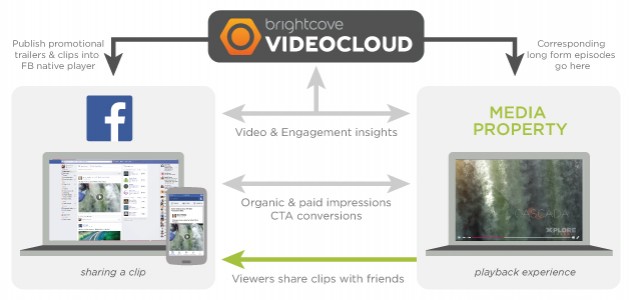These are lively times for social distribution of video and Brightcove is excited to be helping its deep base of customers leverage the fresh, new technology being introduced by Facebook at F8 in combination with our platform.
Among the major social platforms, publishers have historically used YouTube and Facebook differently. YouTube enabled publishers to programmatically upload content but with a broader shotgun approach to a largely anonymous audience. Facebook allowed publishers to (typically) share links for viewing different content types: photos, links, articles.
Facebook has used 2015’s edition of F8 to promote its new Video API with an eye towards giving video publishers the option to programmatically upload content. The goals of the initiative seem to be a more seamless and integrated viewing experience for Facebook users and enhanced targeting (e.g., geography, demographics, etc.) and windowing for publishers.
Overall, the new API allows publishers to optimally utilize social as an enabler of the overall content strategy across both traditional (television, print) and new digital platforms. Facebook has an immense dataset -- from demographics to behavioral information -- which can be used to help publishers distribute, monetize, and measure their content.
As Brightcove has long been at the forefront of enabling our customers to leverage social for their videos, we have been innovating around Facebook’s new APIs with an eye towards understanding and respecting the business models of our customers.
We were mentioned as Video Partner in the F8 keynote and took a kiosk in Facebook’s Dev Garage at F8 to showcase a “labs” project that works as follows…
- “Meredith” is watching an episode of a network show - on the network's site or app - which has sharing buttons enabled in the player. The episode is stored in Brightcove Video Cloud.
- She wants to “share” her viewing onto Facebook but given that the long form episode may require TV Everywhere authentication (and/or DRM) her friends wouldn’t really be able to engage with the actual content she’s watching if shared on FB as is.
- Instead - a dialog box allows her to OK sharing a clip or trailer of the content (also stored in Video Cloud and associated with the episode she’s watching)
- The clip is shared onto Facebook which is:
- Good for Facebook (more premium video content and a potential advertising opportunity)
- Good for the network involved as it drives a call to action back to their site where the long form viewing can properly take place
- Good for the UX as it doesn’t block a user from engaging with content on Facebook but rather provides platform/environment-aware associated content which can be consumed
Here’s a schematic of how it works:

For media companies, social distribution isn’t always as simple as the share button.

